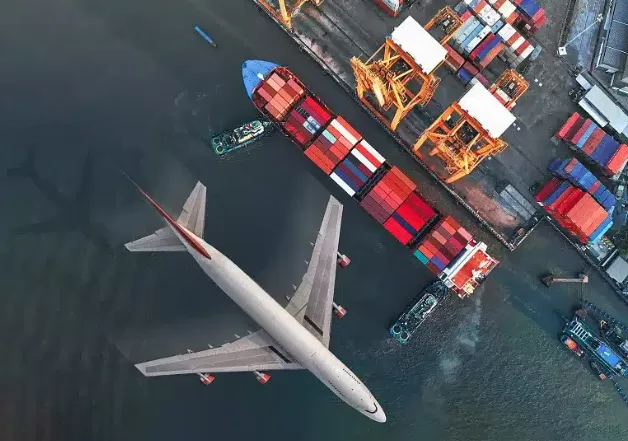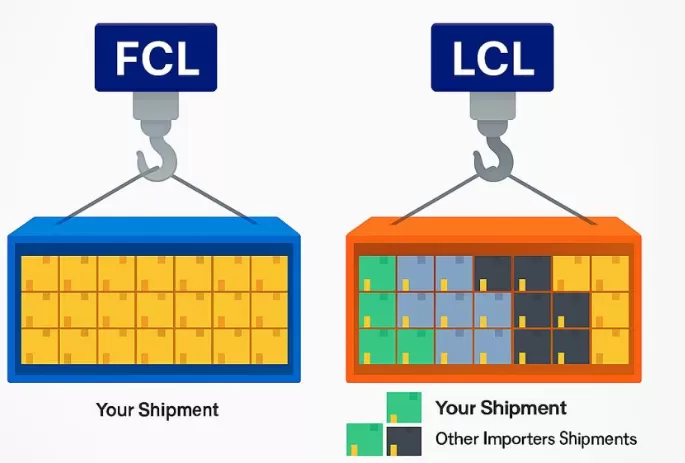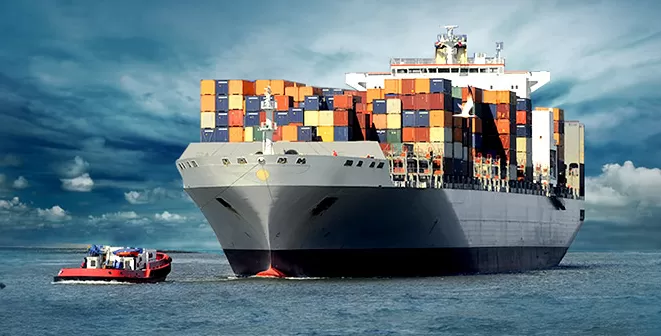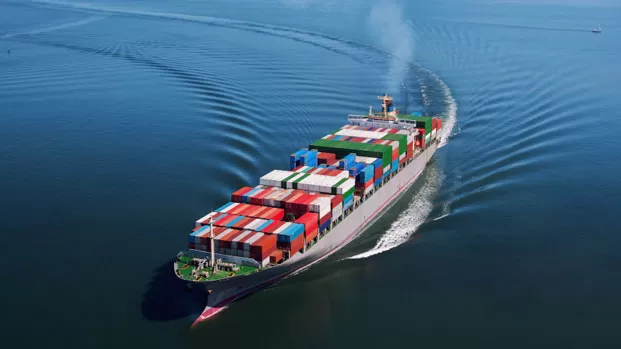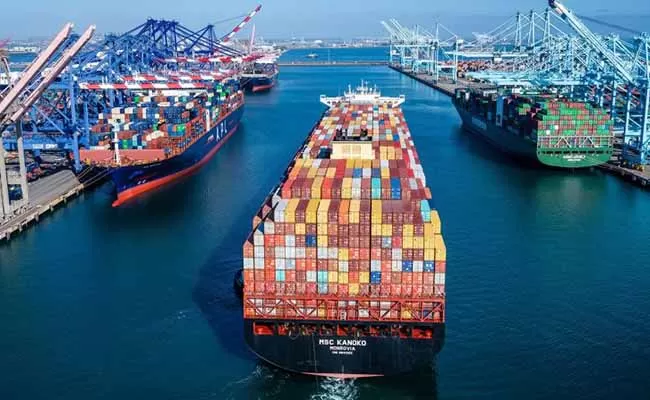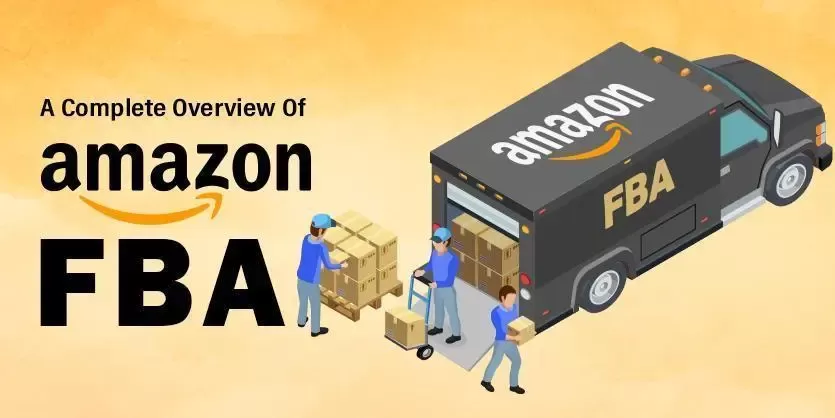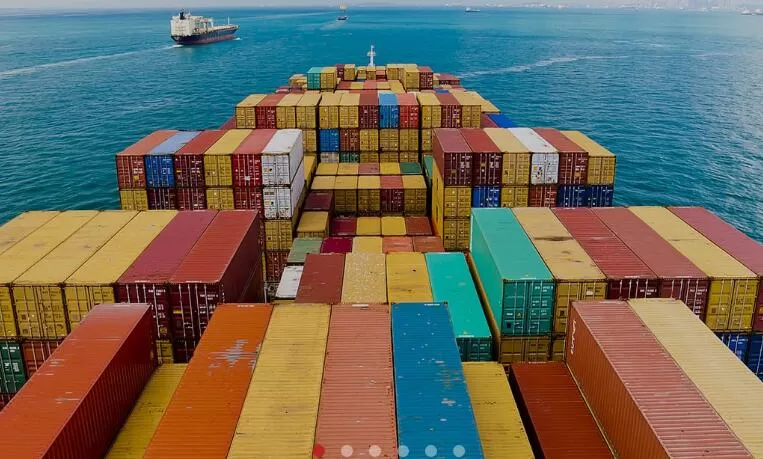This guide provides a step-by-step guide to shipping from China to Houston (Shanghai/Ningbo/Shenzhen → Port of Houston). You'll find realistic transit time and cost ranges, a decision matrix for selecting the right shipping method, Houston-specific operational details (terminals, detention/demurrage, drayage), a list of readily available quotes, cost-saving strategies, two short case studies with accompanying data, and a comprehensive FAQ addressing real-world buyer concerns. This guide provides everything you need to ship your cargo reliably and economically.
Are you ready?
Get real-time quotes for Houston
Get Quotes
Highlights — quick answers (read first)
Typical ocean transit & price ranges (Shanghai → Houston): 39–51 days; 20' FCL commonly $5,400–$7,200+, 40' FCL $6,300–$8,400+ (market snapshot).
LCL: expect ~41–56 days and per-CBM pricing that can be cost-effective for small shipments.
Air freight (urgent goods): 6–10 days door-to-door typical for airport-to-airport, rates vary widely (100 kg sample ranges shown below).
Top risks to budget for: drayage, container detention/demurrage, peak-season surcharges, Customs holds and inspection breakdowns. Check Port Houston tariffs and dwell rules for exact liability.
When to use what: FCL for volume (>6–8 CBM often pushes toward FCL), LCL for small quantities, air for time-sensitive/high-value items, sea+truck (intermodal) for inland consolidation. Use the decision matrix below.
Table of contents
Which shipping mode should you pick? (decision matrix)
Transit times & realistic price bands (data table)
Route options and how cargo moves into Port Houston (terminals, drayage, Lynx portal)
Customs, documents & Houston-specific clearance tips
How to get an accurate quote — step-by-step checklist (copy & paste)
Cost-saving tactics, timing and negotiation levers
Special/project cargo rules (OS/OG, dangerous goods, cold chain)
Two short real-world case studies (numbers included)
FAQ (8 high-value questions)
Which shipping mode suits you?
Use this matrix to match volume, value, and speed to the best mode.
| Scenario / Priority |
Typical best mode |
Why (short) |
| Small parcels, very fast, ≤200 kg |
Express (DHL/UPS/FedEx) |
Door-to-door, customs clearance built-in, higher per-kg cost. |
| High value, low volume, urgent |
Air freight |
Faster and secure; still requires customs at origin & destination. |
| Cartons/pallets, irregular timetables, cost conscious |
LCL (consolidation) |
Pay per CBM, but longer lead time and extra stuffing/de-stuffing handling. |
| Large volume (>1 container every 1–3 months) |
FCL |
Economies of scale; lower per-CBM cost and fewer handling points. |
| Oversized/project cargo |
Breakbulk / Project forwarding |
Specialized handling, long lead times, requires heavy-lift services. |
Quick rule of thumb: if you regularly exceed ~6–10 CBM per shipment, compare FCL vs LCL — often FCL becomes cheaper and faster. Freight data platforms (marketplaces and route search tools) let you compare live rates for the same lane.
freight forwarding
Get real-time quotes for Houston
Get Quotes
Transit times & realistic price bands
Below is a practical table you can copy when briefing suppliers or a freight forwarder. These are market snapshot ranges (use them as budgeting references; request live quotes for final pricing).
Shanghai / Pudong → Port of Houston (representative ranges) — source: freight marketplace snapshots and route tools.
| Mode |
Transit time (door-to-door typical) |
Representative price ranges (market sample) |
| Ocean FCL — 20' |
39–51 days |
$5,415 – $7,220 (20') — price band example. |
| Ocean FCL — 40' |
39–51 days |
$6,330 – $8,440 (40'). |
| LCL (per CBM) |
41–56 days |
$903 – $1,204 per CBM (1 CBM sample). |
| Air (100 kg sample) |
6–10 days |
$1,312 – $1,749 (100 kg sample). |
| Express (10 kg sample) |
3–6 days |
$296 – $395 (10 kg sample). |
Notes & interpretation
These are estimates designed for planning; your exact quote depends on pickup city (Shanghai, Shenzhen, Ningbo), INCOTERMS, seasonality, and carrier capacity. Freight marketplace pages and route search tools provide these snapshot ranges and live quotes.
Always request breakdown: ocean base rate, BAF/FSC (fuel), PSS/GRI (general rate increases), THC, origin/destination charges, drayage, local taxes, and documentation fees.
Air Freight — Route & Transit Time
Air freight is the go-to when speed or high unit value matters. For Shanghai/Shenzhen/Ningbo → Houston expect door-to-door transit of roughly 6–10 days under normal conditions (airport-to-airport 2–4 days + origin/destination trucking, customs clearance, and potential consolidation time). Use this checklist when briefing forwarders:
Key inputs to request: airport pair (PVG–IAH), AWB vs consolidated AWB, chargeable weight (actual vs volumetric), incoterm, required delivery window.
Typical cost drivers: weight band, fuel & security surcharges, dimensional factor, seasonal capacity. Ask carriers for both airline rate + origin handling + destination handling + customs clearance + last-mile.
Operational tips: pre-clearance documentation (commercial invoice, packing list, certificate if controlled product) avoids CBP/destination delays. For urgent small parcels, compare express couriers (DHL/UPS/FedEx) — they bundle clearance but cost more.
Pitfalls: volumetric pricing for light/large shipments; delayed flights/airline space squeezes during peak seasons (CNY, Q4).
Ocean (FCL & LCL) — Route & Transit Time
Ocean remains the cost leader for volume. For Shanghai → Port of Houston typical ocean transit windows (vessel sailing + transshipment) fall in the ~39–51 day range door-to-door, depending on routing and drayage.
FCL (full container load)
When to use: frequent shipments or volume > ~6–10 CBM per month.
Operational calls: book earliest sailings 4–6 weeks out for peak periods; confirm free time at destination terminal (Bayport vs Barbours Cut).
Quote breakdown to ask for: ocean base rate, BAF/FSC, origin THC, destination THC, local drayage to zip code, documentation fee, detention/demurrage terms.
Packing note: container payload optimization (pallet build + load plan) reduces damage and avoids re-stow charges.
LCL (consolidation)
When to use: irregular small shipments, sample runs. Expect ~41–56 days door-to-door due to consolidation windows and stuffing/de-stuffing steps.
Key risks: extra handling points increase damage/loss risk; higher per-CBM price for boxed goods; possible delays at consolidation hubs.
Cost compare tip: always compute landed cost per CBM, including consolidation handling and destination THC — LCL can lose on price once volume approaches an FCL break-even point.
Sea-Express — Route & Transit Time
Sea-Express (a marketed “express” ocean product or premium loop with fewer port calls) bridges cost and speed: typical transit 18–30 days depending on carrier and chosen rotation. Use Sea-Express when you need lower cost than air but faster schedules than standard FCL.
Who offers it: major carriers and integrators with premium strings or direct Panama-cut transits.
Price/benefit: higher than standard ocean base rate but lower than air; fewer transshipment touches reduces delay risk.
Booking tips: confirm that Ocean-Express includes priority berthing and fewer port calls; check for extra surcharges labeled as “express premium” or expedited handling fees.
Operational caution: capacity limited and often filled first by contract shippers — book early or use consolidator services that resell space.
Sea + Truck — Route & Transit Time
“Sea+Truck” or sea+dray (Chinese ) refers to ocean move plus inland trucking legs (either at origin or after discharge). Door-to-door timing equals ocean transit + drayage; expect total 42–60 days from major Chinese ports to Houston warehouses, influenced by inland trucking windows and chassis availability.
Common uses: inland collection in China to coastal port (domestic trucking), or post-arrival trucking from Port Houston to inland distribution centers.
Critical cost items: origin inland haul, terminal handling, chassis fees, destination drayage, port accessorials.
Operational tip: ask for slot/appointment requirements for both origin trucking and destination pickup to avoid detention. Include pallet build constraints for truck loading (weight per axle rules).
Documentation: ensure trucking manifests align with B/L to avoid gate rejections.
Door-to-Door — Route & Transit Time
Door-to-door removes buyer’s responsibility for local pickup/clearance, but costs more. Transit time = carrier’s mode transit + origin pickup time + destination delivery time. Typical ranges:
Air door-to-door: 6–12 days (including origin pickup and last-mile).
Ocean door-to-door: 45–70 days depending on routing and final inland delivery distance.
What to verify on quotes: explicit line items for origin pickup, export customs (if included), import customs brokerage, destination trucking, and any delivery appointment fees. Confirm the forwarder’s role as Importer of Record (IOR) or if you supply that info.
Risk mitigation: include SLA for delivery window and liability for demurrage/detention when booking Door-to-door service with Amazon FBA shipping strategies expertise.
Port-to-Port — Route & Transit Time
Port-to-port is cheapest if you can manage local pickup/arrival logistics. Transit time here reflects pure ocean/air leg:
Ocean port-to-port (Shanghai → Houston): typical vessel sailing ~30–45 days (port-to-port depends on whether transit is direct or via transshipment).
Air airport-to-airport: 2–4 days flight time (plus processing).
Buyer actions: coordinate drayage and customs broker at destination; confirm container release window and terminal cut-off times.
Route options & how cargo flows into Port Houston — practical operator notes
Main ocean route patterns
All-water direct (via Panama or US East Coast transshipment) — common when sailing from Asia to the Gulf; longer but avoids excessive drayage. Transit windows typically fall in Freightos’ 39–51 day range for Shanghai→Houston.
Transshipment via West Coast or East Coast hubs (LA / Long Beach / Savannah / NYNJ) — sometimes used depending on carrier rotation and vessel strings; transshipment can add days and increase risk of delay. Use the route search tool or a forwarder to compare transit vs cost tradeoffs.
Port Houston operates several container terminals (notably Bayport and Barbours Cut) with distinct access rules, working windows, and tariff structures; consult Port Houston tariffs and the Lynx customer portal for vessel schedules and container status. Port tariffs define wharfage, demurrage/dwell fees and are updated regularly.
Drayage & last-mile realities
Drayage (vessel terminal → warehouse) is highly variable and can be a significant component of landed cost. Local drayage markets publish typical examples and spot rates — plan for variability and accessorials (liftgate, short-haul permits, chassis shortage surcharges).
Dwell / demurrage rules at Port Houston are enforced by tariff — there is typically a free time window, after which charges apply; excessive dwell fees or demurrage escalate quickly. Use the Port Houston Tariffs and Dwell Fee notice to plan container pickup.
Operational tip: subscribe to the port/terminal Lynx portal (or ask your forwarder) to track live container status and avoid detention/demurrage surprises.
Customs, duties & documents — Houston-specific checklist (do this BEFORE shipment)
Required documents (minimum):
Commercial Invoice (accurate HS code, unit value, currency)
Packing List (dimensions + gross/net weights per pallet/box)
Bill of Lading (ocean or AWB for air)
Importer Security Filing (ISF) for ocean shipments to the U.S. (filed 24–48 hours prior to vessel departure from China)
Any product-specific certificates (FDA, USDA, CPSC, FCC, etc. depending on goods)
Houston notes
Port Houston enforces local tariffs and free-time rules; containers left beyond free time incur wharf demurrage or dwell fees per published tariff schedules. Verify the applicable tariff (Tariff Nos. 8, 14, 15) for your terminal.
Customs holds are commonly triggered by incomplete paperwork, wrong HS classification, or missing product certificates — ensure HS codes and country of origin are consistent across Invoice and B/L. Use a clearance checklist to reduce risk.
Customs checklist (copy & paste)
Confirm HS code and tariff classification.
Prepare commercial invoice + packing list (match exactly to goods).
File ISF at least 24–48 hours before loading for ocean imports.
Pre-notify consignee and arrange local customs broker and drayage agent.
Check product rules: FDA, USDA, EPA, CPSC as applicable.
Keep funds ready for estimated duties + broker fees to avoid release delays.
Practical: hire a local Houston customs broker if you’re unfamiliar with US entry — broker will pull entry bond, pay duties, and communicate with Customs and Border Protection (CBP) on your behalf. Guided Imports’ process guidance is a good reference for how the document flow and risk points occur.
How to get an accurate quote — step-by-step (use this checklist verbatim)
When requesting quotes, provide this exact information — it eliminates “ballpark” replies and reveals hidden fees.
freight forwarding
Get real-time quotes for Houston
Get Quotes
Quote Request Template (paste into email/form):
Pickup city (China) and full origin address
Delivery address (Houston) or port-to-port if applicable
Commodity description (HS code if known)
Weight (kg) and volume (CBM) — list both gross & net weights
Number and dimensions of pallets/boxes (L×W×H in cm/in)
Preferred INCOTERM (EXW / FOB / CIF / DDP / DAP)
Desired transit time / delivery deadline
Any special handling (OG/OS, DG, cold chain, high value)
Is cargo insured? (Yes/No; if yes, insured value)
Are you an importer of record? (Yes/No)
Ask for a full line-item breakdown:
Ocean/air base rate; BAF/FSC; PSS/GRI; origin THC; destination THC; Customs clearance fee; terminal handling; drayage (to zip code); detention/demurrage terms and free time; documentation fees; port taxes and local charges.
Why this matters: a sample “all-in” quote lets you compare offers apples-to-apples. Freight marketplaces and forwarders (Freightos, Flexport) provide both spot quotes and breakdown views — use them to sanity-check forwarder quotes.
Amazon FBA — Small Seller (Practical lanes & Timing)
Small Amazon sellers need a pragmatic, low-friction approach — speed is less critical than predictable cost and correct labeling. Recommended options:
Small parcels / ePacket / Express — for samples and low-weight SKUs; lead time 3–10 days; high cost per unit but minimal paperwork.
Air consolidated to FBA — book air consolidation into FBA-preferred import hubs; forwarder will handle pallet build, labeling, and manifest. Transit 7–14 days typical from major Chinese air gateways to assigned FBA inbound center.
LCL to local prep + palletize to FBA — LCL into Houston + local prep center can be cost-effective for small sellers shipping mixed SKUs; allow 45–65 days door-to-door (consolidation windows included).
DDP vs DAP— practical guide for logistics readers: many small sellers prefer DDP (landed cost included) for simplicity — the forwarder handles duty and VAT, preventing FBA check-ins from stalling. DDP costs more but reduces operational friction.
FBA compliance checklist: correct carton content labeling, FNSKU labels, pallet configuration to Amazon specs, carton weight limits, bill of lading / airway bill matching packing list, appointment booking at inbound center.
Cost saving: aggregate SKUs to fewer pallets, optimize cube (avoid half-empty pallets), consolidate monthly to hit FCL breakpoints where possible. Use freight forwarders specialized in e-commerce/FBA (they’ll provide ASIN-to-pallet planning).
Cost-saving tactics & timing
Consolidation (LCL / groupage) — for small shipments, consolidate to avoid paying full container space. But model costs: when your monthly LCL volume exceeds a container’s usable CBM, switch to FCL. Freightos marketplace data helps estimate the break-even point.
Season planning — book earlier for pre-Chinese New Year (Jan–Feb) and Q4 peak (August–October sailings) to avoid GRI & blank sailings. Carrier schedules and Flexport route tools help spot capacity constraints.
Negotiate accessorials in contract — secure capped demurrage or shared responsibility during congestion windows. Long-term contracts can stabilize freight costs if volumes are predictable.
Use a local consolidation hub near Houston for multi-origin inland haulage to reduce drayage distance and spot trucking costs.
Audit bills — request a freight audit or comparison of invoices vs the original quote; small errors and duplicated surcharges are common.
Concrete saving example (how to check): collect 3 FCL quotes and 3 LCL quotes for the same shipment, then compute landed cost (freight + drayage + THC + duties + warehouse). If LCL landed cost per CBM > FCL per CBM, choose FCL.
Special cargo & project shipments
Project cargo, heavy lifts, dangerous goods and cold chain shipments require different planning:
Oversize / out-of-gauge (OOG): need lift planning, possible vessel stowage fees, and route clearance. Start planning 6–12 weeks out. OPCA’s project cargo guide covers typical lead times and special permits.
Dangerous goods (DG): must be declared with correct UN number and packaged per IATA/IMDG rules; DG often incurs additional container stuffing limits and surcharges.
Cold chain: verify container pre-cooling, door-to-door cold chain integrity, and validated temperature logs. Carriers that handle reefer bookings have limited slots; book early.
Insurance: for project and high-value cargo use all-risk insurance and confirm Incoterm responsibilities.
Two mini case studies (realistic numbers)
These are simplified for planning. Use them to brief your forwarder.
Case A — Small e-commerce shipment (LCL)
Origin: Ningbo → Port of Houston
Cargo: 3 CBM, 450 kg (electronics accessories)
Mode: LCL consolidation
Estimated costs (sample): ocean LCL freight $1,200 (total, all-in for 3 CBM) + destination THC $150 + drayage to warehouse $250 + customs broker $120 + duties (estimated 2% of CIF) → Total ≈ $2,000. Range per CBM ≈ $667. (Example consolidation logic from freight market snapshots).
Case B — 40' FCL (industrial parts)
Origin: Shanghai → Bayport (Port Houston)
Cargo: 40' container weights and capacity explained, commercial goods
Estimated costs (sample): ocean FCL $6,800 (mid-range example) + origin local charges $350 + destination THC $450 + drayage to inland warehouse $900 + customs broker $250 + duty (varies by HS) → Total ≈ $9,550. Per CBM (assume 68 CBM) ≈ $140.
Lesson: FCL becomes more economical when volume is high; LCL can be cost-effective for low volumes but adds handling time and consolidation risk.
freight forwarding
Get real-time quotes for Houston
Get Quotes
FAQ
How long does it take to ship a 20' container from Shanghai to Houston?
Typical door-to-door is ~39–51 days depending on route, transshipment, and inland pickup time. Use the transit snapshot above for planning.
Is FCL cheaper than LCL for small shipments to Houston?
Not always. For low monthly volume, LCL may be cheaper per shipment; but once your monthly CBM approaches a container’s usable volume, FCL will usually be cheaper per CBM. Collect side-by-side quotes to find the breakeven point.
What hidden fees should I expect at Port of Houston?
Possible items: terminal handling charges (THC), drayage, detention/demurrage if you miss free time, wharfage and local port tariffs. Check Port Houston tariff documents for exact rules and free time.
How do I estimate customs duty for goods imported to the US?
Use the HS code and commercial invoice value to estimate duty rates; you can also use import duty estimators on freight marketplaces or consult a customs broker for exact liability.
Can Amazon FBA shipments go through Houston?
Yes — but confirm which Amazon inbound center you’re using and the preferred gateway. Many sellers route to closer FBA centers; check Amazon’s inbound guidance and coordinate with your forwarder.
How much is drayage in Houston?
Drayage varies by distance, chassis availability, and fuel surcharges — expect spot drayage examples from $200–$900+ depending on zip code and accessorials; get local drayage quotes and factor in potential surcharges.
What causes customs holds most often?
Missing documents, mismatched HS codes, missing product certifications (e.g., FDA), and suspicious valuation. Prepare documents carefully and use an experienced customs broker.
Door-to-door vs port-to-port — which is cheaper?
Port-to-port is cheaper if you control pickup/delivery locally. Door-to-door adds trucking, handling, and convenience fees but simplifies logistics. Choose based on your capability to manage local pickup/clearance.
Exploring Other Major US Logistics Hubs?
While Houston is a key Gulf Coast gateway, understanding routing to other strategic hubs can optimize your supply chain. Explore our detailed guides for other major destinations:
West Coast: Los Angeles, Portland
East Coast: New York, Baltimore, Boston
Gulf Coast: New Orleans
Midwest: Chicago, Kansas City
South: Atlanta, Phoenix

 EN
EN
 FR
FR
 ES
ES
 JA
JA
 PT
PT
 RU
RU
 AR
AR
